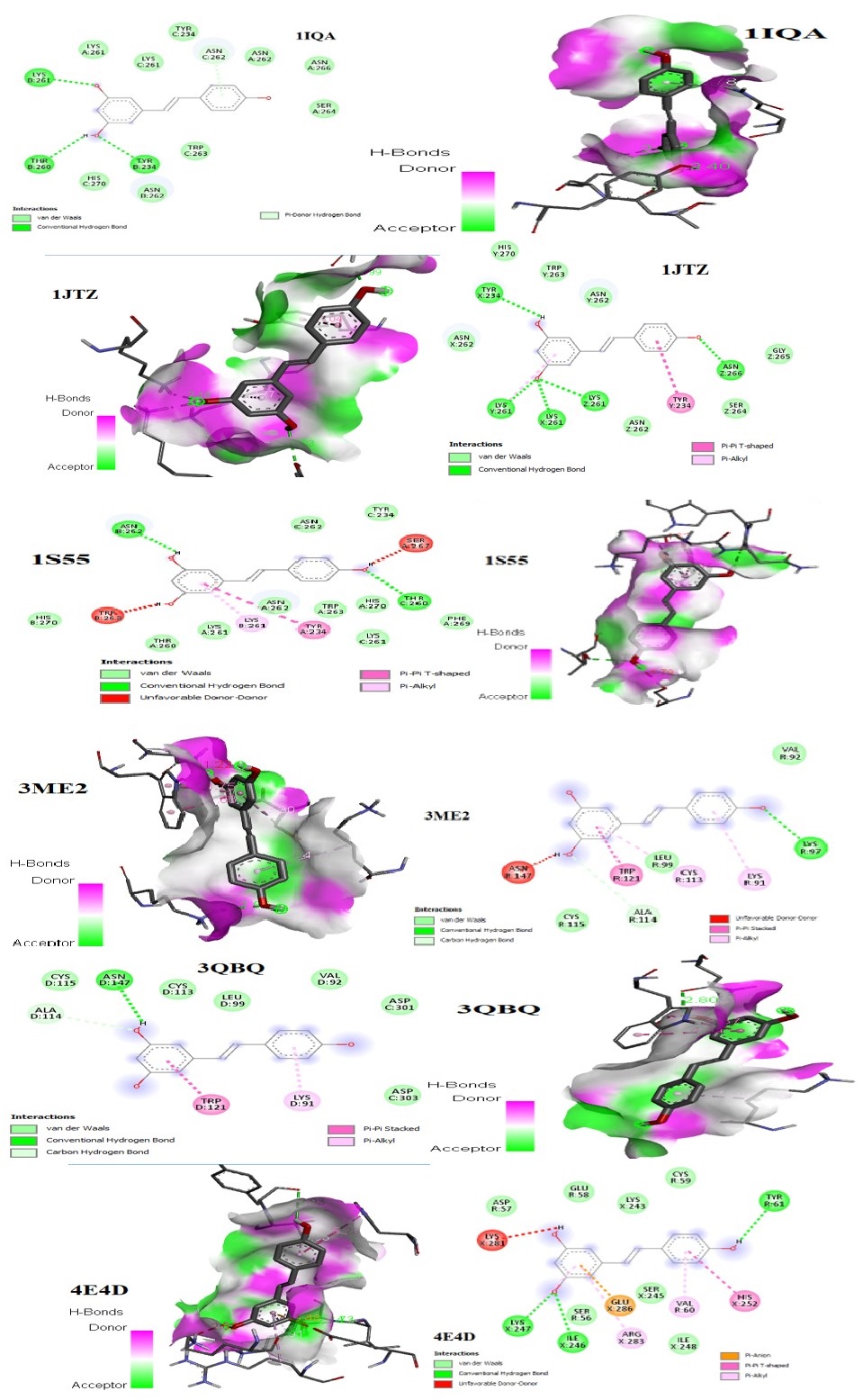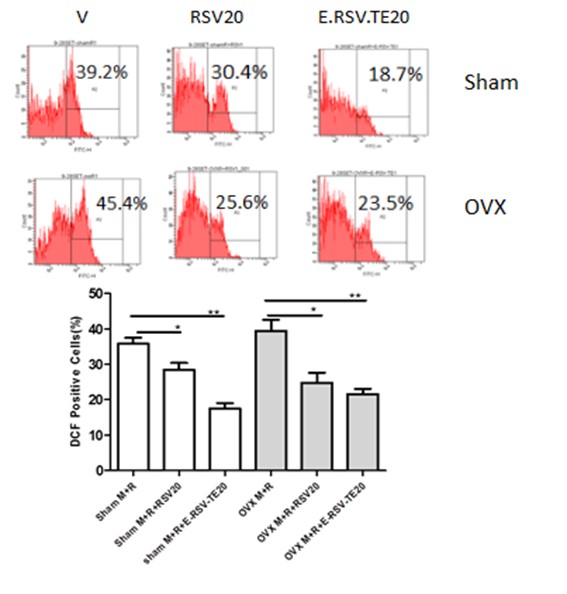Abstract
By applying the in-silico method, resveratrol was docked on those proteins which are responsible for bone loss. The Molecular docking data between the resveratrol and Receptor activator of nuclear factor-kappa-Β ligand [RANKL] receptors proved that resveratrol binds tightly to the receptors, showed the highest binding affinities of −6.9, −7.6, −7.1, −6.9, −6.7, and −7.1 kcal/mol. According to in-vitro data, Resveratrol reduced the osteoclasts after treating Marrow-Derived Macrophages [BMM] with Macrophage colony-stimulating factor [MCSF] 20ng / ml and RANKL 50ng / ml, with different concentrations of resveratrol (2.5, 10 μg / ml) For 7 days, the cells were treated with MCSF (20 ng / ml) and RANKL (40 ng / ml) together with concentrated trimethyl ether and resveratrol (2.5, 10 μg / ml) within 12 hours. Which, not affect cell survival. After fixing osteoclast cells with formaldehyde fixative on glass coverslip followed by incubation with 0.1% Triton X-100 in PBS for 5 min and after that stain with rhodamine phalloidin staining for actin and Hoechst for nuclei. Fluorescence microscopy was performed to see the distribution of filaments actin [F.actin]. Finally, resveratrol reduced the actin ring formation. Resveratrol is the best bioactive compound for drug preparation against bone loss.
Keywords:
resveratrol; protein docking; in-vitro; receptor activator of nuclear factor-kappa-Β ligand [RANKL]; fluorescence microscopy

 Thumbnail
Thumbnail
 Thumbnail
Thumbnail
 Thumbnail
Thumbnail


